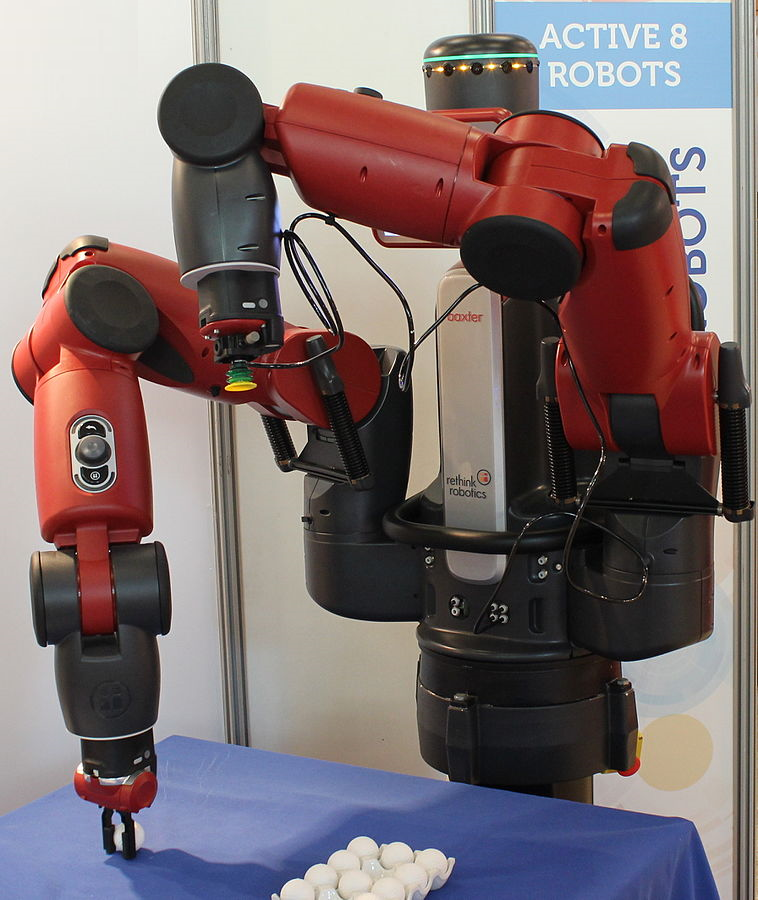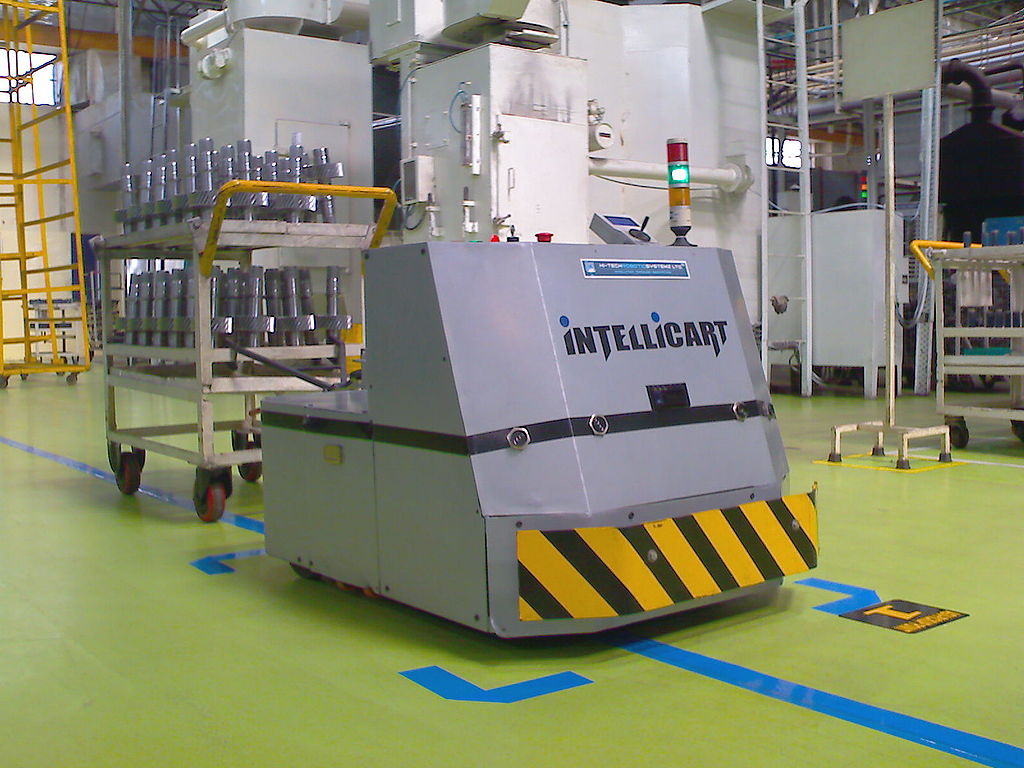Another place robots are commonly seen is in industry. The first useful robots have been used in factories, and have been there for a long time.
Robots in industry
Robot arms
Robot arms range from very tiny and delicate robots for turning eggs, to colossal monsters moving shipping containers. Robot arms tend to use stepper and servo motors. We will look at servo motors in the pan and tilt mechanism used in this book. An impressive current industrial arm robot is Baxter from Rethink Robotics:

Many robot arms are unsafe to work next to and could result in accidents. Not so with Baxter; it can sense a human and work around or pause for safety. In the preceding image, these sensors can be seen around the "head." The arm sensors and soft joints also allow Baxter to sense and react to collisions.
Baxter also has a training and repeat mechanism for workers to adapt it to work, using sensors in the joints to detect their position when being trained or playing back motions. Our robot will use encoder sensors so we can precisely program wheel movements.
Warehouse robots
Another common type of robot used in industry is those that move items around a factory floor or warehouse.
There are giant robotic crane systems capable of shifting pallets in storage complexes. They receive instructions on where goods need to be moved from and to within shelving systems:

Smaller item-moving robot vehicles often employ line sensing technology, by following lines on the floor, wire underneath the floor via magnetic sensing, or marker beacons like ASIMO does. Our robot will follow lines like these. These line-following carts frequently use wheeled arrangements because these are simple to maintain and can form stable platforms.






































































